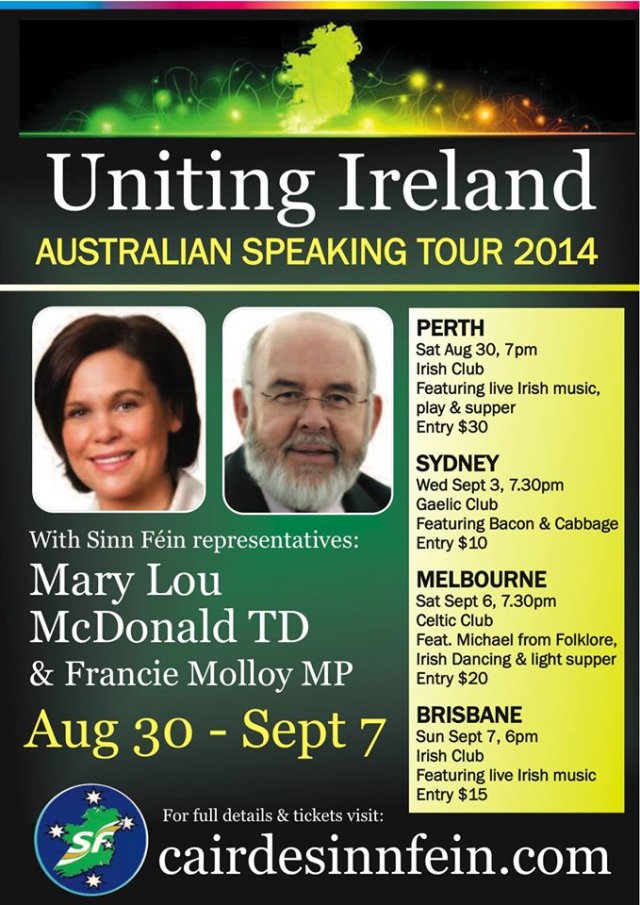
Eoin O’Broin is an activist with Irish republic party Sinn Fein. He is on the South Dublin County Council and is also a member the party's Ard Comhairle (national executive).
Two Sinn Fein leaders, party Vice President and TD Mary Lou McDonald and MP Franci Molloy, are touring Australia and speaking in Perth, Sydney, Melbourne and Brisbane from August 30 to September 7. You can book tickets here.
The piece below is slightly abridged from O’Broin’s blog Another View.
* * *
Sinn Fein had a good election on May 24. We consolidated our position in the North and significantly increased our strength in the South. We are now well placed to make significant gains in the next Dail [Ireland's parliament] election.
As we face that electoral contest, two questions will loom large. Voters and the media will want to know who we would enter government with and what economic policies will form the core of our campaign.
In the 2007 election, we fudged the first and back-peddled on the second. The electorate punished us.
In 2011, we set out a real alternative to the austerity consensus and pledged not to enter coalition with Fianna Fail or Fine Gael [Ireland's two main capitalist parties]. The electorate rewarded us with an extra 10 seats.
Of course, there was a lot more to these elections than just that — but a central part of the outcome of both contests was our answer to those two key questions.
The reason is simple. In Dail elections most voters are thinking about who they want and who they don’t want in government. They make strategic calculations based on what they think is possible.
Until recently, a government led by any party other than Fianna Fail or Fine Gael was not available, no matter how much some of us may have wished for it.
This is changing. The combined support for the two centre-right parties is falling. A growing number of people — as indicated in the left-of-centre vote in 2011 and 2014 — want something different. The electorate is realising that a better, fairer southern Ireland requires an end to the dominance of Fianna Fail and Fine Gael.
Whether there will be enough of us to end that dominance by the next general election is not yet clear.
In large part, that will be determined by how we fight the campaign and whether we can convince enough of those people yearning for real change that Sinn Fein is the party that can deliver.
Sinn Fein should loudly declare that we will not participate in a Fianna Fail or Fine Gael-led government after the next general election.
We want to be in government — but not at any price. We want to be in power to deliver deep and long-lasting social, economic and political change.
That cannot be achieved in a government in which the majority voice is either of the centre-right parties. So we should tell the electorate that if they want real change they need a government led by Sinn Fein.
If the post-election numbers don’t allow this, people need to know that we won’t go back on our word, but will continue to build popular support for a real alternative from the opposition benches.
We also need to set out our key political commitments — the red line issues that must form the basis of Sinn Fein participation in any government.
We should produce a short pre-election manifesto outlining our key priorities on job creation, tax reform, public spending and political reform. It should be radical, credible and costed. We should print a million copies in pocket book format and go door to door from October.
Our aim should be to convince as many people as possible of the merits of our left republican alternative before the election is even called.
If we are serious about the kind of Ireland we want to help create then we need to rise to the challenge. People are hungry for change but they are distrustful of politicians.
We have to convince them that Sinn Fein is different — that we mean what we say and will only take office if it means wielding real power to create a better and more equal Ireland.
Like Green Left Weekly on Facebook and follow us on Twitter.